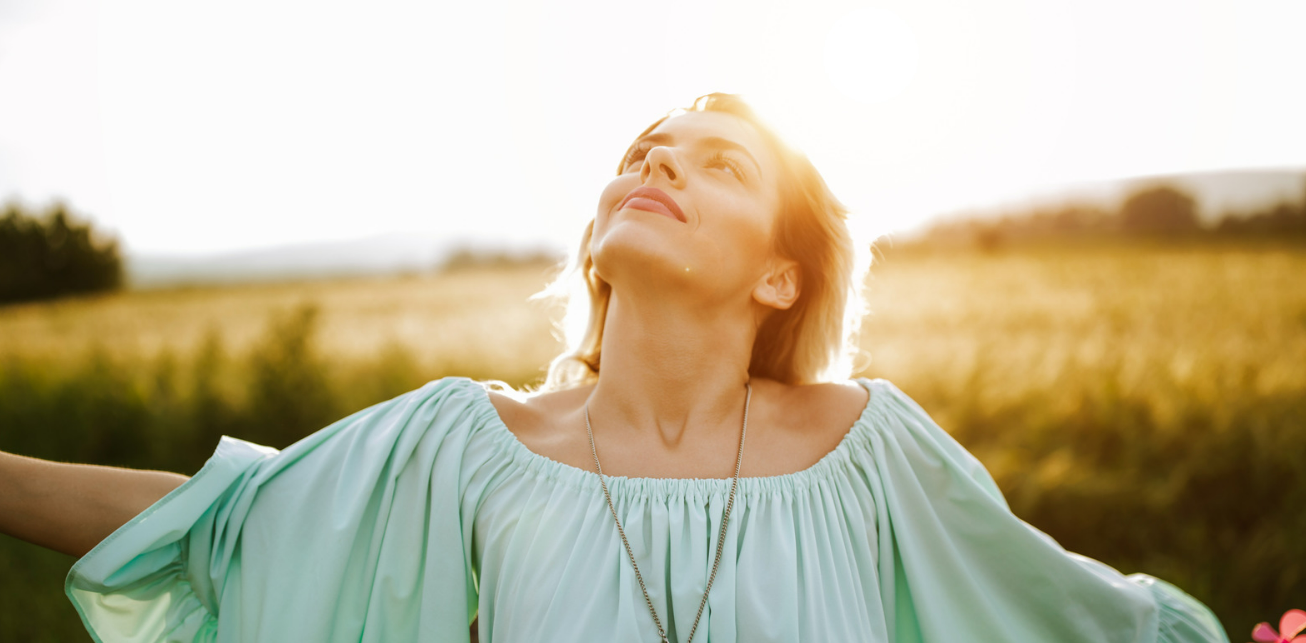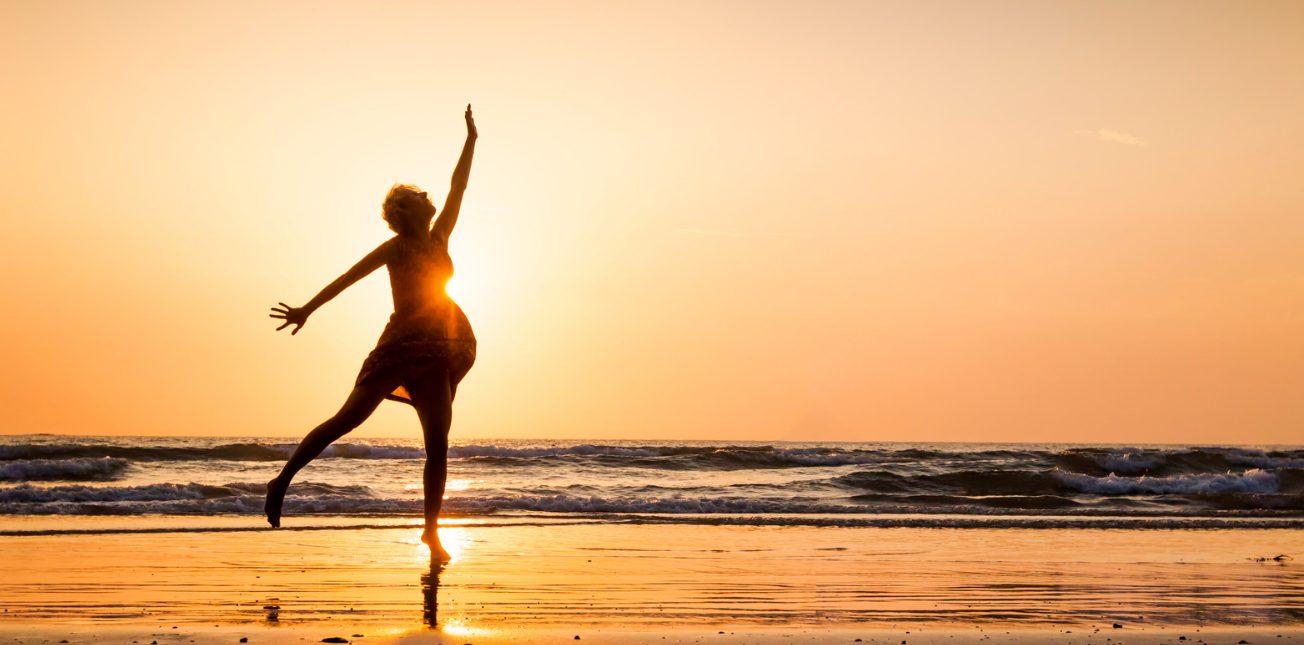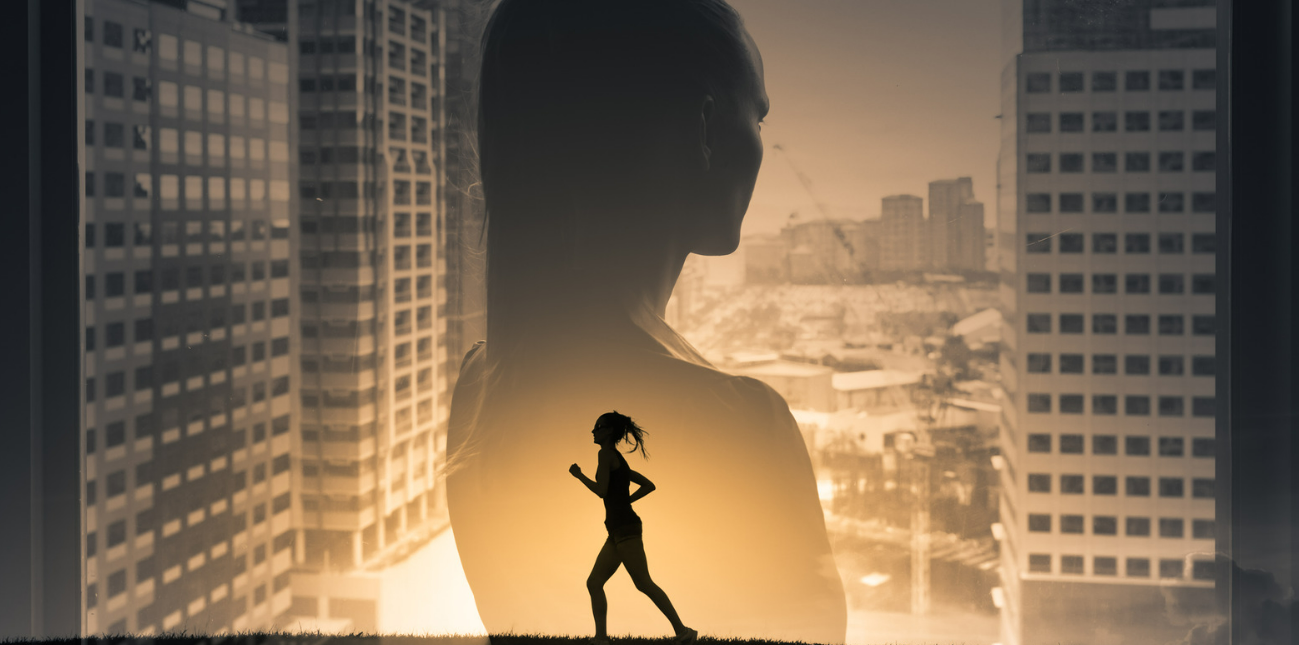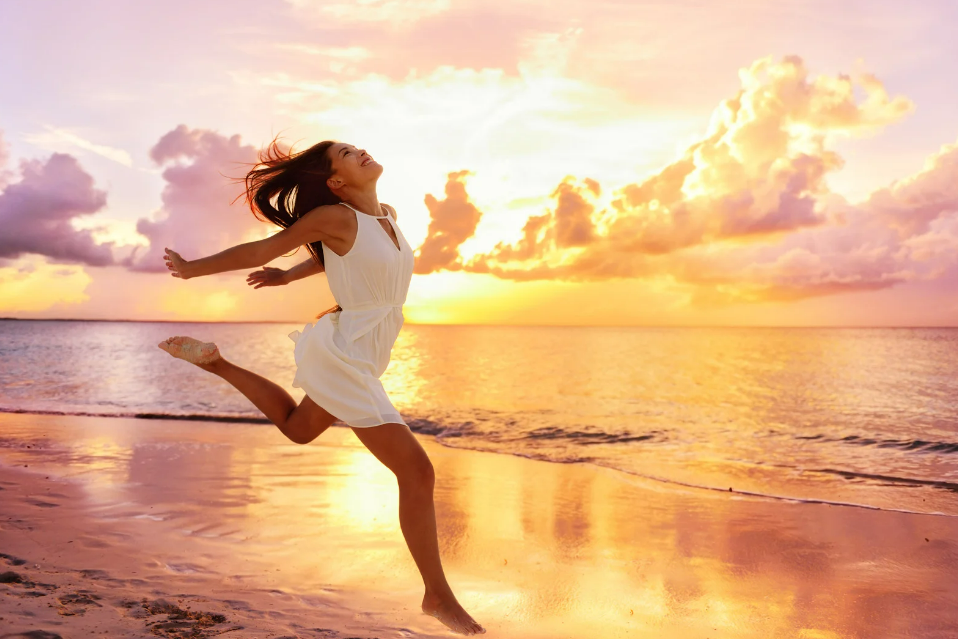Interview with Sara Robledo
In this episode, we will uncover 3 keys:
- The Journey to Healing and Harmony
- Understanding the Body-Mind Connection
- Everyday Wellness in Action

A Podcast Transcription
Episode 28: Empowering Women’s Body-Mind Connection for Lifelong Transformation~Meet Sara Robledo
Intro
Odiva Vasell: (00:00)
Welcome, my fabulous fempreneurs! Today, we’re going to talk about an important issue which many of us face when we become discontented and disconnected with our own bodies. My guest today, Sara Robredo, is really going to tell us how to find help, happiness, and harmony within ourselves. Welcome, welcome today, Sara.
Sara Robledo: (00:38)
Oh, this is such a beautiful, beautiful space, and just being here, I already feel uplifted and courageous. So excited to be with you, Odiva. What a pleasure, what an honor to be here. I’m delighted to share with you.
Odiva Vasell: (00:54)
Oh, yes, I am so excited to just welcome you and just feel your energy because you do so much healing for so many women. And I’m really excited. But what we want to know first is where did you begin on this journey? What brought you to this work that you do?
The Journey to Healing and Harmony

Sara Robledo: (01:21)
Yes. So, I now, you know, Odiva, I’m about to turn 50. It’s going to be my 50th birthday very soon, and I can’t really quite believe it because I now can go on hikes, and I take my dog out for walks every single day, and I go out dancing. My work is very physical, and I’m training, and I’m dancing, and I’m performing, and I’m using my body in these amazing ways. And one of the best things is that I can now sleep through the night, and that is so amazing for me. Last night, you know, seven hours straight, eight hours straight every night, just restful sleep and waking up energized. It is such a gift. And my life wasn’t always like this. My body wasn’t always feeling this great. I feel better now that I’m about to be 50 than I did when I was in my 20s. Isn’t that amazing? So, my first message is for women, you know, to not give up hope. When we’re in our 40s and our 50s, we can regain that health, that vitality. We can feel better than we have ever felt. When I was in my 20s, I was a young dancer. So, I’m a professional modern dancer, and I was training hardcore, and I was dealing with a lot of injuries. I was going through some difficult family times, and I was having to face a lot of things that, you know, a 15-year-old shouldn’t have to deal with. And a lot of mental strain and pain, family issues, mental illness issues in my family that kind of put me into a state of absolute stress and anxiety, constant anxiety, and dealing with a very difficult career where the pressure to be thin and to be perfect was just, you know, can you imagine what the pressure all women have? That pressure, right? Right. I mean, unless you live in a very amazing culture and have an amazing upbringing, we usually, you know, women have to face this amazing pressure. And as a dancer, it just doubles. So, I was under a lot of pressure, and all of this pressure was putting my body into a lot of strain. And even though you would say, you know, “Oh, but you were young and fit.” Yes, but I had so much body pain to the point where one morning I woke up, I must have been maybe 16, 17 years old, and I couldn’t move because my neck was in a spasm. It was so scary. My aunt—I was living with my aunt at that point—she had to call a doctor. You know, I was rushed to a chiropractor’s office. I got checked, and really nothing was actually wrong, fortunately, with my back. But the chiropractor was amazed by the amount of tension I was holding. He—you know, he was like, “I can’t believe a woman this young is holding so much on her shoulders.” So that made me understand, you know, firsthand the body-mind connection and how all the stress and the strain that I was going through, um, in my mind, all the pressure I was under was having this effect in my body, coupled with some, you know, not the best habits, you know, lifestyle habits. It wasn’t a good formula. So that’s where I started searching for alternatives. What could I do? What did I need to learn? How could I be in a different relationship with my body? And that started a beautiful journey, and it took time, a lot of search, a lot of, uh, research and investigation and trial and error. And as I started learning more about how your body is designed to move and techniques for bringing yourself back into center and regulating your nervous system and how to be just in a better relationship to all of myself, then I started noticing that all of this that I was learning was actually something that I could also share with others.
Odiva Vasell: (06:10)
And that’s an amazing story.
Sara Robledo: (06:13)
So that’s, you know, a little bit of, yes, what brought me to do the work I do now.
Odiva Vasell: (06:19)
And what that tells me is that you had this great wisdom at such a young age. I mean, you took on these burdens, these heavy burdens that were sitting on your shoulder, and they showed up in your physical body. But to have the wisdom to know that you could do better for yourself and in a healthy way where so many people resort to doing more damage to the body or suppression, you chose to explore and learn how to release and relent. So that now at 50, you’re not just killing it.
Sara Robledo: (07:05)
That’s right. That’s right.
Odiva Vasell: (07:07)
So tell us exactly what your company does for the ladies that are listening.
Sara Robledo: (07:13)
Yes, so I teach women to awaken to their body wisdom so they can learn to move without pain or strain, and then you can feel amazing in your body. When all of the pieces of yourself come together in this way, I can see women becoming unstoppable. There is nothing that can hold you back because I know women are powerful leaders and have big visions, and sometimes your body is holding you back from those things you want.
Odiva Vasell: (07:52)
Interesting.
Sara Robledo: (07:54)
Yes, so that is what I teach. I teach women to learn to listen to their bodies, understand how their bodies are designed to move, release and access any unnecessary tension, and then they can really unleash their full potential. And I see this with women that are in a range of situations, dealing with different things and injuries in their bodies. All these principles apply and are relevant for all.
Odiva Vasell: (08:32)
Your body holding you back. I mean, it makes sense, but it’s just the concept I hadn’t thought about as much before. Um, yeah, I understand that the body talks to us, but I guess we can kind of get so caught up in suppressing what the body is saying. “I’m uncomfortable, I don’t like this, this is not a good situation.” Come on, body. I still have to go to work. I have to do my nine to five. I have to take care of my family. I’m not trying to hear you, body. So, how do you bring women to recognize how important the body is, not just as a tool to keep pushing, but as a tool of enlightenment?
Understanding the Body-Mind Connection

Sara Robledo: (09:28)
Beautiful. You are so right. You’re pointing right to what I see is perhaps the biggest pain that we as humans can feel, which is this connection when we’re not connected. So we live in a culture that really emphasizes our mental abilities, and even though there’s a lot of acceptance to the importance of having a healthy body, we usually think that we can take perhaps an hour a day to take care of our bodies, and we’ve done our job. And that’s if we’re lucky, right? The ones that are really very serious about taking care of their bodies might take an hour a day. My question is, what happens to the other 23 hours? We live mostly in our minds, and we are, even as you’re sitting, as your listeners are listening to this, are they in touch with their bodies? Are we in touch with what is happening right now? How we’re holding ourselves? How it is that, you know, if you’re multitasking, other people are listening, and how it is that you’re using your body and moving through your body. And what would it be like to have a deeper connection, to be awake to your body wisdom? It’s not something that you only do for a few minutes a day. It’s something that, once you start opening up that level of consciousness, you bring with yourself throughout the day. So this idea that your body could be holding you back, I mean, I think that it’s pretty obvious if somebody is dealing with pain or if you’re not comfortable in your body. And if we agree that body and mind are intimately connected, then wouldn’t you agree that there is no way that you’re going to be able to achieve the things that you want to achieve if you don’t bring your body with you?
Odiva Vasell: (11:49)
Yes, yes, yes, yes. I hear you. I receive your message because so many times in life, and I know especially for women, we say, “When my body is this way, then I will go for that goal. When I feel comfortable in my body, so to speak, but within the restraints of what society says it should look like, then maybe I will do better, feel better, like myself better.” And from what I’m getting from you is, do better, feel better, like yourself better first.
Sara Robledo: (12:33)
Yes, and this message is for women, no matter what your age, your size, your physical ability, because we can all learn to use our bodies in better ways. We can learn habits that promote health and well-being. We can become more and more conscious of those that don’t promote our health. So bringing this awareness is absolutely not just restrained to one area or one type of person. And you’re absolutely right. We think, “When I achieve something, then I’ll be able to.” And my invitation to you is, what if you could feel better now? What if now, you would be able to feel more ease in your body?
Odiva Vasell: (13:42)
Powerful. Yeah, that’s a powerful concept because feeling that sense of ease and beauty within our own body, not just with the pretty dress or the nice shoes (my thing is shoes), but really feeling that sense of ease every day, that would change our relationship with everything—people, food.
Sara Robledo: (14:12)
Yes. So, can I tell you the story of one of my students?
Odiva Vasell: (14:17)
Yeah.
Sara Robledo: (14:18)
So, I have a student, and I’m allowed to share her testimonials. Her name is Dominique. When she started working with me, it was painful for her to walk. She’s over 60 right now, and there was so much pain to just even walk that the effect that this was having in her life was that she was shutting herself off from doing a lot of the things she loved to do. So she wasn’t socializing as much; her friends would be doing things that she wouldn’t be able to join. There were trips that she wanted to do, and she had to think twice about them and would oftentimes cancel. She had problems with her digestion; she was bloated and felt so uncomfortable. And not just, you know, the way she looked, but just the whole feeling of unease in her body. And then we started working, and it was a process, but the unfolding, to witness this unfolding of this woman, has been just outstanding. Because it didn’t take that long for her to start changing, noticing what her habits were, making some shifts, you know, strengthening some parts, and letting go of excess tension, building her awareness, bringing better balance into all of her body. And, you know, she just went on this week-long retreat for her profession; she’s a psychotherapist in another city, she had to travel, it was strenuous to be there because they had a lot of activities going on. And she came back, and she was like, “Sara, I can’t believe it. I went through that whole thing, and I thought I’m not gonna be able to get through this. How am I going to do it?” And I did, and I didn’t have pain, and I just was enjoying the retreat so much. And she said that the best thing is that she has now regained the spring in her step. What would we love to be over 60 and feel bouncy and springy again, right? Isn’t that amazing?
Everyday Wellness in Action

Odiva Vasell: (16:53)
Yeah, that is amazing and a phenomenal concept, just bringing our bodies to the forefront because we are doing so much work now on our minds, but solely in the mind. And I sometimes say, you know, they say the monkey mind or the naughty mind because the mind will keep you up all night thinking of how to figure this problem out and how to just, I guess, even avoid the tension that you might be feeling in the stress. But working it through the body, which is our biggest organ, and we’re ignoring it.
Sara Robledo: (17:38)
Yes.
Odiva Vasell: (17:19)
That is a wonderful concept, and as you talk, I thought about kids who are so free and so playful. I remember even myself as a kid, I did not like food most of the time, and it was just the way it was prepared was not the way I would—well, you know what really? What it was, my taste buds were overloaded easily, and I just started to learn that children have a higher sense of taste and smell. So a lot of the things that we as adults kind of force ourselves, “See, this is good for you, so you must drink this every day, or you must eat this every day,” we learn to be disconnected even when we eat.
Sara Robledo: (18:38)
Absolutely, and you’re pointing to something very important, that children get disconnected also, unfortunately, through our educational system because we are taught suddenly to have to sit for hours on end to learn six to eight hours after you were free. I’m sure you were free and playing and using your body, and you learned so much through movement. And suddenly, this amazing fountain of knowledge that is your body, you have to cut it off.
Odiva Vasell: (19:20)
Yeah.
Sara Robledo: (19:21)
You need to sit still for hours on end. I believe that’s where the disconnect starts.
Odiva Vasell: (19:30)
Yeah.
Sara Robledo: (19:31)
So, you know, teaching and education that incorporates all the body knowledge, that is, I think, the new frontier, the cutting edge of education and where we should be going towards for children.
Odiva Vasell: (19:48)
I like that. I like that concept because, as a teacher in the past, I’ve taught elementary school, high school, and I’ve noticed an imbalance in that many of the boys want to stop their education or drop out of school because of this what I feel is a strong pull for them to sit still all day. And you’ve watched them as they’re little; they just don’t have that control in a sense because they want to be free. So, they go into these arts and crafts and working things so that they can move their bodies. But I always thought, maybe if we could incorporate that into the classroom, and of course, the girls as well would love that.
Sara Robledo: (20:40)
Yes, yes. I think, you know, whenever there are interventions in classrooms—I was a teaching artist in the New York City public schools for over seven years—and to go into the public schools as a teaching artist, as a dancer, and I would work in collaboration with the teachers, and we would think of ways to incorporate more movement into the classroom. And those are amazing tools, especially think of immigrant children who are just learning English. But, you know, the body, dance movement, is a universal language. And so, suddenly, you know, they were included in beautiful ways, right? And they were, you know, at an equal level finally to their classmates because we were all moving. And then it was just a beautiful experience to bring that creativity and art into the public school systems.
Odiva Vasell: (21:40)
And as you know, I have a heart for the multicultural women and those who are, you know, English is their second language. And so much communication is done through body language and movement. So, I love what you’re saying that we can reconnect with that child and bring forth this happiness using our bodies.
Sara Robledo: (22:08)
And that’s true no matter what our age is, right? Because then we think, okay, so that’s for children. But would we allow ourselves to play again, to express ourselves with our bodies? Maybe we’d love to dance, but we haven’t given ourselves the opportunity to move in a long time, right? And it doesn’t have to be a performance; it can just be playing your favorite piece of music and allowing yourself to move and enjoy. When was the last time we did that? We allowed ourselves to do that?
Odiva Vasell: (22:53)
Yes.
Sara Robledo: (22:54)
It doesn’t have to be so complicated, right? So I have developed a process and a system through many years of study, but then we can bring it back to just move, let the music move you and enjoy the pleasure of moving.
Odiva Vasell: (23:18)
I love dance. Did a little bit of dancing myself, and when you say that, I can just feel like that was my happiest time when I could lose myself in the play of the dance. And I’m sure a lot of women can relate to that. So what I’m gonna do is I just wanna thank you again for bringing this to the forefront and joining me on this discussion of using our entire selves.
Sara Robledo: (23:51)
Yes.
Odiva Vasell: (23:52)
To bring forth healing and health and happiness.
Sara Robledo: (23:57)
That’s right.
Odiva Vasell: (23:58)
And I’m just going to go ahead and invite you back to show us some movements as well.
Sara Robledo: (24:06)
Let’s do that next time for sure. I would love to share a practice, an experience. I call them experiences, for sure. I would love that.
Odiva Vasell: (27:17)
Thank you, Sara.
[Music]
Conclusion
In wrapping up this insightful podcast discussion, we’ve uncovered a personal journey of resilience and self-discovery, delving into the profound connection between our mental well-being and physical health. As we absorb the practical tips and stories shared, let’s take a moment to reflect on our own paths toward wellness. Each small, intentional step we make to reconnect with our bodies contributes to a happier, healthier, and more balanced life. Here’s to embracing the wisdom gained and embarking on our unique journey towards holistic well-being. May it be filled with joy, movement, and a deeper understanding of the incredible dance between our bodies and minds. Cheers to a brighter, healthier future!